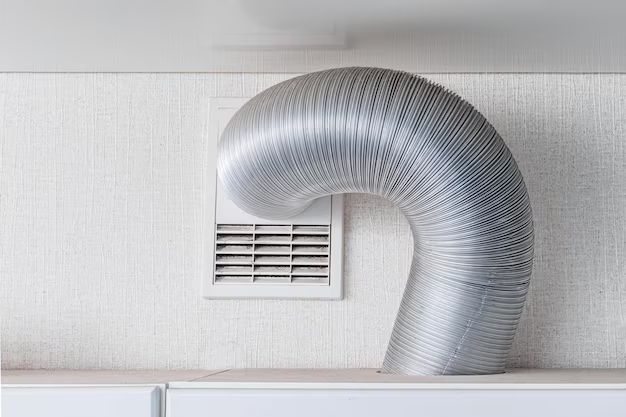Page Contents
Quick Answer
Yes, apartment dryers typically need to be vented to the outside to remove lint and moisture. Venting is required by most building codes for fire safety and indoor air quality. Unvented dryers can lead to mold growth and moisture damage in apartments.
Do Apartment Dryers Need Vents?
Most apartment dryers require a vent to the outside of the building. Venting serves two key functions:
- It removes warm, moist air from the dryer. This prevents excess humidity buildup indoors which can cause mold growth.
- It removes lint particles from the air. Accumulated lint is highly flammable and venting minimizes fire risk.
Building codes in most jurisdictions require apartments to have vented dryers for these safety reasons. Exceptions are sometimes made for condensing dryers which collect moisture in a tank rather than venting it out.
Venting Regulations
The International Residential Code (IRC) and International Mechanical Code (IMC) provide guidelines for dryer venting to ensure fire safety and proper moisture removal. Key requirements include:
- Vents must exhaust to the outdoors.
- Maximum length of vent duct is 35 feet.
- Ducts must be smooth-walled rigid metal.
- No more than two 90-degree turns allowed in the duct.
- Duct joints must be taped to prevent lint buildup.
- Duct exits require backdraft dampers to prevent outdoor air entering when dryer is off.
Local city codes are often based on the IRC and IMC standards. Apartments must comply with local regulations.
Ventless Dryer Options
Ventless or condensing dryers are an exception to venting requirements in some cases. They use a closed-loop system to cool and condense moisture which gets collected in a removable tank.
Advantages of ventless dryers:
- No need to vent to the exterior.
- Can be installed anywhere without exterior ductwork.
- Energy efficient – no heated air is lost outdoors.
Disadvantages:
- More expensive upfront cost than vented dryers.
- Smaller capacity and slower drying times.
- Moisture tank needs regular emptying.
- May require more frequent cleaning to control lint buildup.
Check your local codes before installing a ventless dryer. Some jurisdictions prohibit their use due to fire safety concerns. Get approval from your landlord before installing one in a rental unit.
Dryer Vent Minimum Requirements
To ensure proper dryer function and safety, vents must meet certain specifications:
- Vent material – Rigid or flexible smooth-walled metal ductwork only. Plastic or foil ducts can trap lint and are fire hazards.
- Vent length – Less than 35 feet from dryer to wall outlet. Deduct 2.5 feet for each 45-degree bend.
- Vent diameter – 4 inches minimum for typical home dryers.
- Lint traps – Vent ducting should be easy to access and disassemble for cleaning. Lint traps required every 35 feet.
- Outlet flap – Outlet must have a backdraft damper flap to prevent outdoor air flowing back into dryer.
- Sealing – All joints must be taped to prevent lint leakage and accumulation inside ducts.
Consult the manufacturer’s venting specifications for your particular dryer make and model. Carefully follow their guidelines.
Alternatives to Vented Dryers
If venting a dryer in your apartment isn’t feasible, here are a few alternative options:
- Ventless condenser dryer – Closed system as described earlier. No exterior vent required.
- Heat pump dryer – Uses a heat exchanger instead of venting. More energy efficient.
- Clothesline – Old-fashioned but effective for drying clothes without a dryer.
- Drying rack – Save energy and space with an indoor rack to air dry clothing.
- Laundromat – For apartment dwellers without in-unit laundry, the local laundromat is an alternative for occasional loads.
While not always as convenient, these non-venting options avoid potential issues with clogged vents, excess moisture, and fire hazards in apartments.
Conclusion
Most apartment dryers are required by code to vent outdoors. Proper venting removes humidity and reduces lint accumulation over time. Ventless dryers are an exception but may not be permitted in all areas due to safety concerns. Carefully plan your apartment laundry with the local building codes in mind. Proper dryer installation and venting will save energy, operating costs, and prevent potential moisture issues over the long-run.
